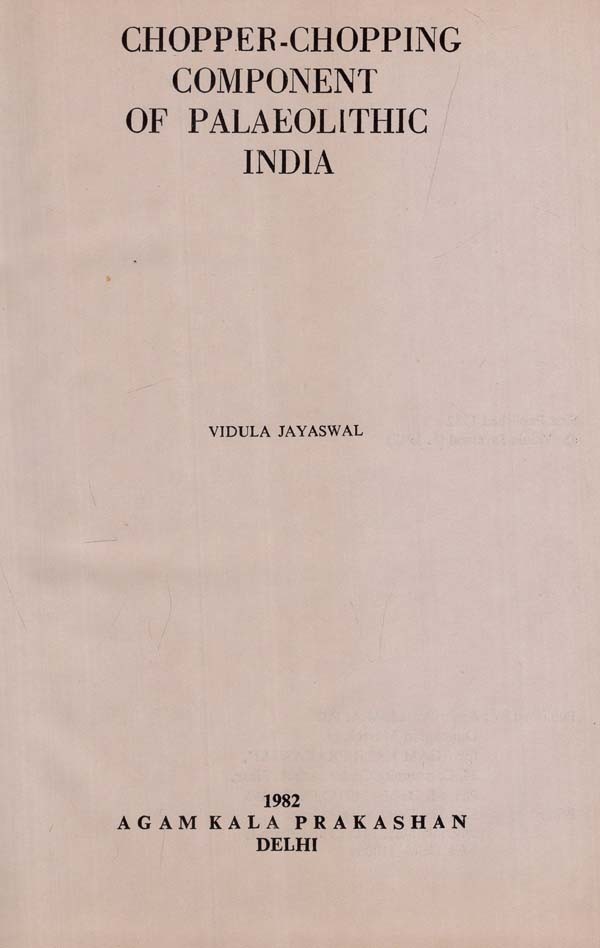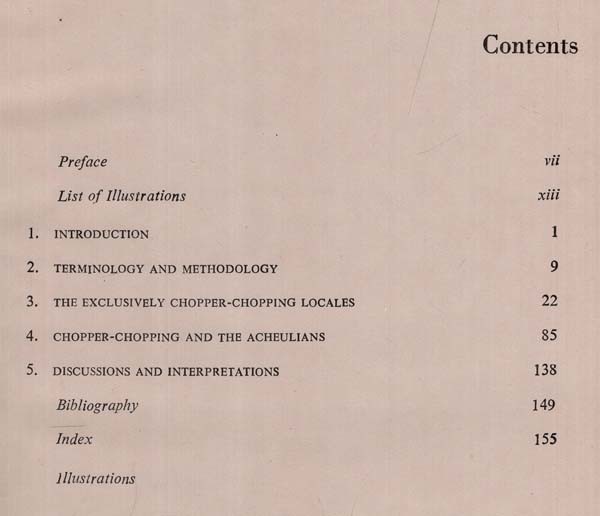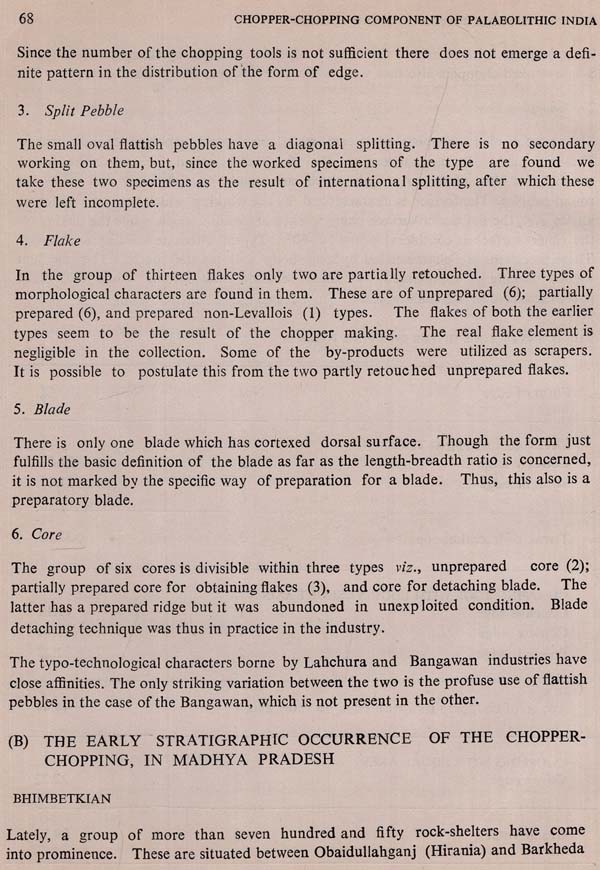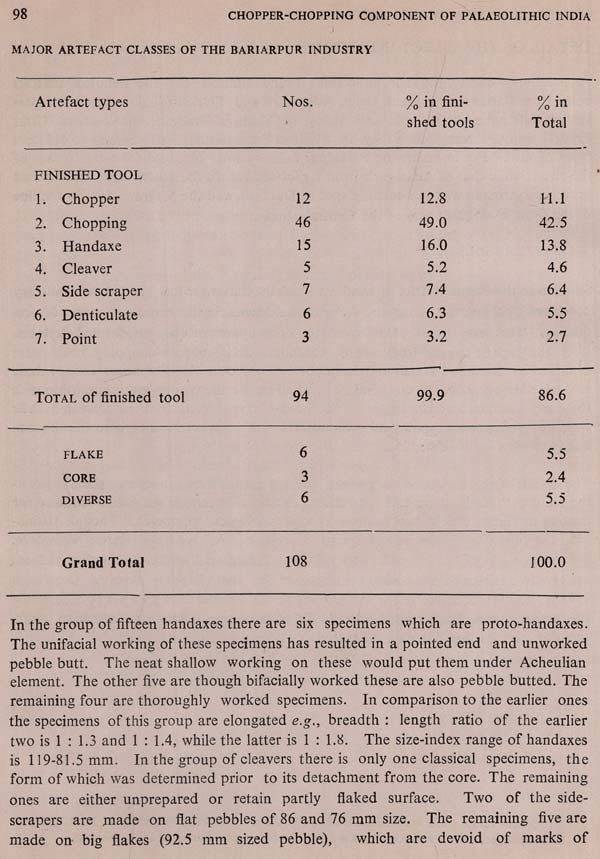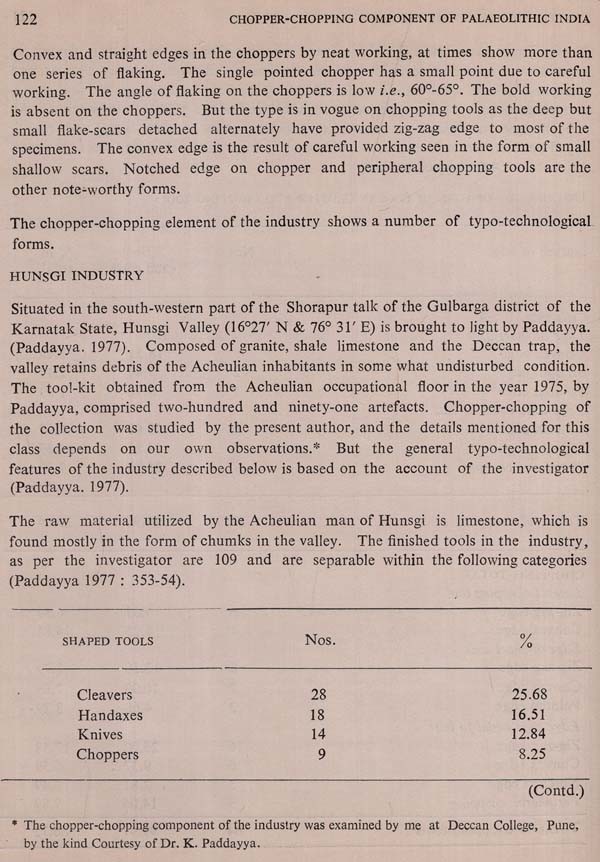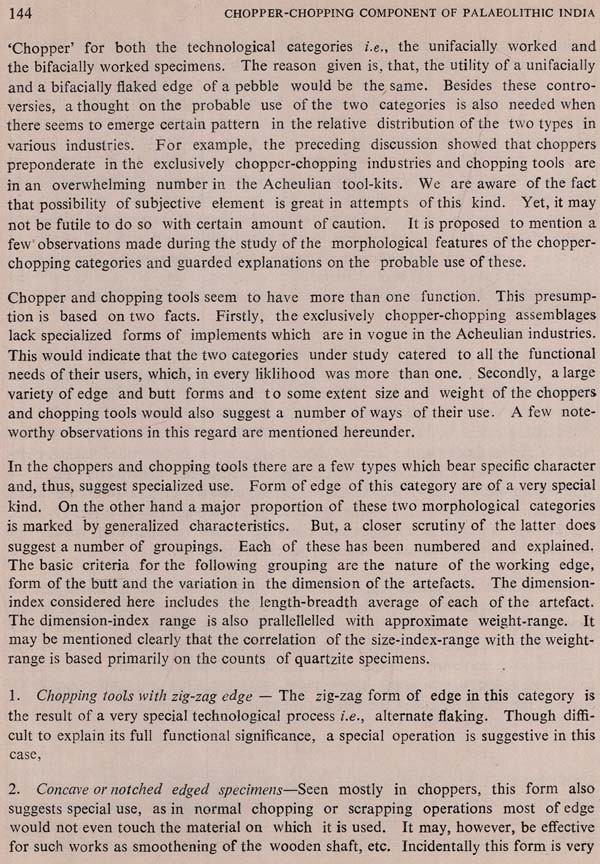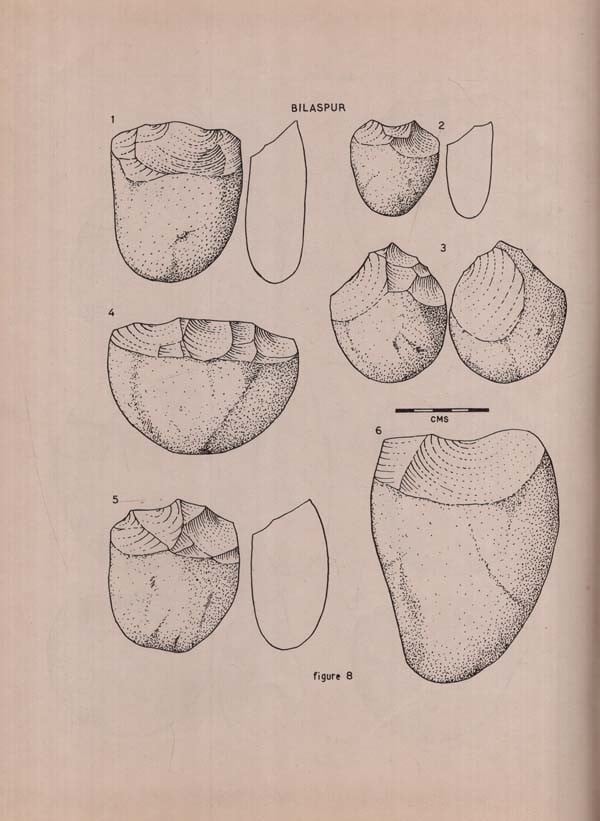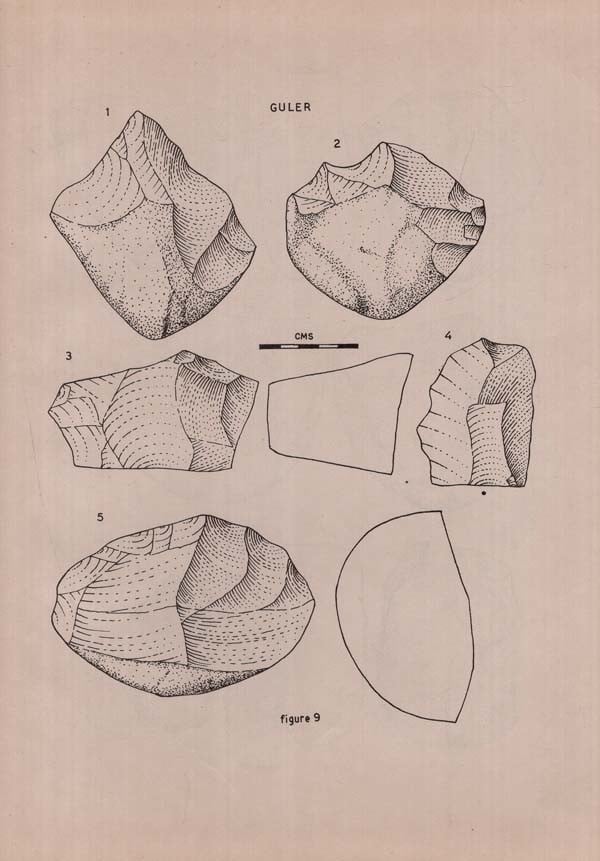
Chopper-Chopping Component of Palaeolithic India (An Old and Rare Book)
Book Specification
| Item Code: | UAS367 |
| Author: | Vidula Jayaswal |
| Publisher: | Agam Kala Prakashan, Delhi |
| Language: | English |
| Edition: | 1982 |
| Pages: | 200 (With B/W Illustrations) |
| Cover: | HARDCOVER |
| Other Details | 9.50 X 7.50 inch |
| Weight | 520 gm |
Book Description
The debate on the significance of the Chopper-Chopping or the pebble tools is now about half a century old. But, so far no attempt is made to study this in detail. In the present book Chopper Chopping Component of Palaeolithic India, the occurance of Chopper Chopping tools in every context of the Lower Palaeolithic phase has been. examined in detail. Besides incorporating the information about the location, stratigraphy and typology, it also discusses the important issues related to the subject. Some of the interpretations which are based on the scientific analysis of the data, provide new dimension to the subject. The basic tool for this investigation is the statistical counts of the typological and technological features of the concerned tool-pits. Apart from examining the issues related to the theme under study, it also lays certain norms for typological studies, when are not popular enough in India, but can be fruitfully applied extensively for unvieling the Cultural contents.
VIDULA JAYASWAL (b. 1947) is Lecturer in the Department of Ancient Indian History, Culture and Archaeology, Banaras Hindu University Varanasi. Inspired by the works of her grandfather (Late) Dr. K.P. Jayaswal, the renowned Indologist and historian, she is deeply involved in the study of various aspects of Ancient Indian History and Archaeology. Vidula was awarded the Doctorate of Philosophy of the Banaras Hindu University in 1973. As Post-Doctoral Fellow of the University Grants Commission and the Indian Council of Historical Research, she carried out investigations into the Stone Age Archaeology of the Chotanagpur Plateau in Bihar. She served the Archaeological Survey of India in the capacity of Deputy Superintending Archaeologist, between July 1977 and February 1979. Besides teaching Graduate and Post Graduate students, Vidula is presently engaged in study ing the Stone Age Archaeology and living terracotta art tradition of Uttar Pradesh and Bihar. Her noteworthy field investigations are the excavations of the prehistoric rock-shelters and the Acheulian sites of Mirzapur and Monghyr districts, and important terra cotta producing centres of Patna, Gaya, Gorakhpur, Deoria districts.
Author of the book Palaeohistory of India, Vidula has to her credit more than thirty research papers, published in the proceedings of the International symposia and various research journals of repute.
After the initial recognition of the Old Stone Age remains in India by Foote in the year 1863, the primary task before the India prehistorians was to accumulate the remains, in great quantities, of the Palaeolithic cultures in its proper geological con text. This was achieved by initiating regional surveys by various centres of archaeology, such as the Deccan College, Poona; the Universities of Calcutta, Allahabad, Banaras, Chandigarh etc., and the Archaeological Survey of India. River valleys received particular attention in this scheme, since they seemed to retain evidence for palaeo-climate, as well as, clues for assigning chronology to the lithic assemblages. As a result of these surveys, the remains of the Palaeolithic man are now reported from almost every part of this sub-continent. Besides, these explorations also brought to light evidence for the existence of each of the three Palaeolithic phases. For instance, the Middle Palaeolithic or the Middle Stone Age was recognized by H.D. Sankalia, at Nevasa, and the Upper Palaeolithic in the Belan valley by G.R. Sharma. Thus, we have now in hand good amount of archaeological data of the Pleistocene epoch, in this part too.
In spite of all this, there are many fundamental quarries about the Palaeolithic cultures which remain unanswered. This is because the treatment given to the archaeological data is of very general nature. The common practice is to scrutinize the tool kits within five or six broad typological units, and, in accordance with the overwhelming traits, assign them to one of the three phases. For example, the occurrence of chopper-chopping, handaxe and cleaver represent the existence of the Lower Palaeolithic stage in the area, while scrapers, points and borers form the bulk of the Middle Palaeolithic. Similarly, the Upper Palaeolithic is recognized by the appearance of blade tools and burins in good proportion. Though essential as the intial step for the comprehension of the field data, it can hardly substitute the detailed scientific analyses of the tool-kits, which is inevitable for the fuller understanding of the Stone Age cultural remains. The purposeful exploitation of the typo-technological analyses is more or less unattempted on the Indian Palaeolithic collections. Thus, the Palaeolithic stages of this sub-continent are marked by a few general characteristics of vague nature.
Implements made on pebbles, cobbles and stone nodules, are one of the earliest creations of man. The archaic nature of these, particularly, the chopper-chopping forms, at times, put them closer in appearance to many such stone pieces which are the result of natural breakage. Thus, it took some time to realize the artefactual character of these. Instead, the comparatively sophisticated working on the Acheulian implements, namely handaxe, prompted the initial recognition of the early human skill on stone, both in France and India. Acheulian implements also emerged as the most prominent culture trait of the Lower Palaeolithic phase, due to their occurrence in great quantities in a wide area. But, as the evidence stands today, chopper-chopping too, has cropped up as one of the important typo-technological trait of the Lower Palaeolithic Phase A comprehensive picture of this trait includes the issues related to its stratigraphic and chronologic occurrences, distribution, contribution to the history of lithic technology, associated human forms etc. A brief account of these is mentioned below.
**Contents and Sample Pages**
